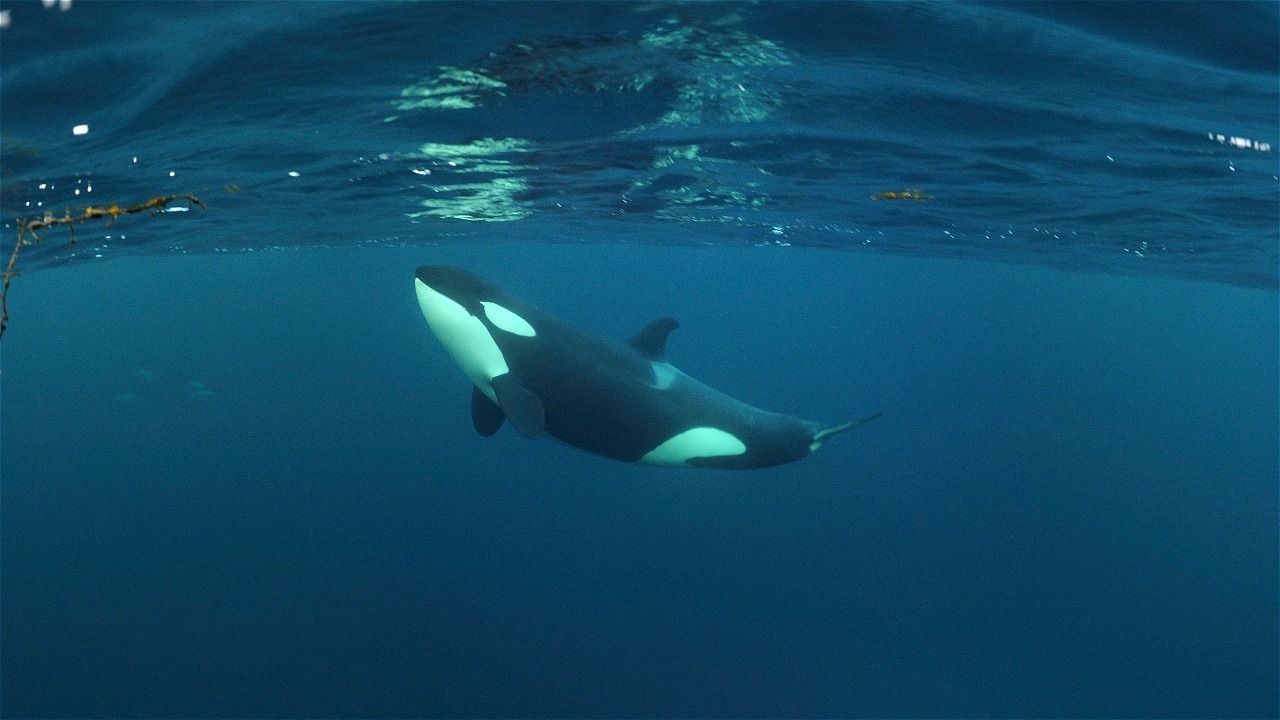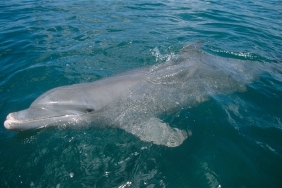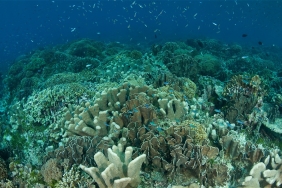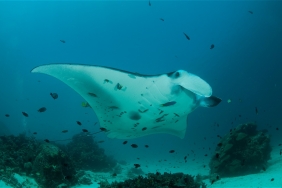ORCA ENCOUNTER IN ULUWATU
By Veda Santiaji and Sheyka Nugrahani
Tourists surfing at Uluwatu Beach, Bali, on September 7 and 9 were surprised by an extremely rare event. An Orca (Orcinus orca) or killer whale suddenly appeared near them. The marine mammal, which from the shape of its dorsal fin is thought to be male, appeared to be just one, even though Orcas generally swim in groups. Orcas are famous for their close relationship between group members. There can be up to 55 members in a group. Lone swimming behavior is more often seen in male Orcas, especially healthy and juvenile ones in shallow waters and areas rarely visited by Orca pods.
In the case at Uluwatu Beach, it is suspected that the Orca was part of a group of at least 3 individuals. It is suspected that the marine mammals were simply exploring an area that is likely to be new. It is important to remember that Orcas tend to be very curious. In addition, the area may also be a habitat for other fishes and their favorite foods.
Contacted privately, Joshua Peters, a whale watching expert from Alaska, said the Orca in Uluwatu may not be solitary, but only temporarily alone because this behavior is commonly seen in male orcas. Marine mammals that are often seen solitary are bottlenose dolphins. Until now, the reason is still unknown, but many speculate that it is a life choice.
"The orca in Uluwatu does not look sick. From the photos, her body looks healthy. Sick orcas generally never swim alone," Joshua added. In a short time, sick orcas will also no longer be found because they tend to swim towards the open sea. If dead, the orca will disappear with the last encounter being close to members of the group.
For humans, it is not recommended to be near the orcas. It is important to remember that whales and other marine mammals are wild animals larger than humans. Adult males can reach 10 meters in length and weigh up to 5 tons. Simple movements, such as a wag of the tail, can be dangerous if they hit a human. Awareness of the potential dangers of being close to Orcas and other marine mammals in nature is a must-have for anyone, especially those who are often active at the sea or beach.
It's not just humans who can be threatened by the presence of Orcas nearby. The marine mammals may also feel disturbed by the presence of humans, especially in large numbers. The animals may see humans as a threat. Other disturbances can come from motorboats and jetskis operated in the vicinity. Be on the lookout for changes in the Orca's behavior, such as sudden fast swimming or relatively aggressive behavior, such as repeatedly slapping the surface of the water with its tail, and loud breathing (trumpet blows). These behaviors are a sign that the Orca is being disturbed. Continued disturbance can lead to death and long-term negative effects for the marine mammal.
Indonesia has more than 35 species of whales and dolphins (Cetacean) and one species of dugong (Sirenian). Almost all of Indonesia's marine areas, which are part of the Coral Triangle (Coral Triangle), are important habitats or migration routes for these marine mammals, making human encounters a possibility. In addition to Uluwatu, Orcas have been found in the waters of Komodo National Park and its surroundings; in the waters of Raja Ampat and its surroundings in the waters around the tip of the northern part of Sumatra Island, in the Banda Sea, in the waters around Ambon Island, and the Indian Ocean.
In various countries, there are many cases of accidents involving humans and marine mammals (whales and dolphins) in close proximity to each other. If you accidentally encounter a marine mammal while surfing or swimming, try to stay at least 30 meters away from the dolphin and at least 50 meters away from the whale to avoid danger or the marine mammal being disturbed by humans. Also avoid touching marine mammals' body parts and feeding them directly. If a marine mammal begins to show a change in behavior, move away as soon as possible or get out of the water.
Human knowledge of the behavior and life of wildlife in marine waters is still very minimal. The participation and concern of tourists and water sports enthusiasts, such as divers, surfers, sailors to help document the appearance and behavior of wild animals through social media will greatly help scientists to map and study the behavior of these animals. The results will provide additional knowledge on how to interact with these wildlife in a safe manner that does not disturb or harm each other. The role of tourists and water sports activists as monitors of wildlife in the waters, of course, while maintaining a safe distance from these animals, has become part of the efforts to conserve the world's waters. WWF-Indonesia highly appreciates their role and participation.
If you want to further observe marine mammals, WWF-Indonesia has issued a Guide to Observing Whales and Dolphins which can be read at the following link: Marine Mammal Observation Guide
References
Baird, R. W. 1999. The Killer Whale. In: J. Mann, R. C. Connor, P. L. Tyack and H. Whitehead (eds).Cetacean Societies - Field Studies of Dolphins and Whales. The University of Chicago Press
Ender, A. I., Muhajir, Mangubhai, S., Wilson, J. R., Purwanto, and A. Muljadi. 2014.
Ford, J. K. B and G. M. Ellis. 2011. Transients: Mammal-Hunting Killer Whales of B.C., Washington State, and Southeast Alaska. UBC Press. 96 pp
Jefferson, T. A., M. A. Webber, and R. L. Pitman. 2008. Marine Mammals of the World: A Comprehensive Guide to Their Identification.Academic Press/Elsevier. 573 pp
Kahn, B. 2001. A Rapid Ecological Assessment of Cetacean Diversity, Abundance & Distribution. . The Nature Conservancy-APEX Environmental. Indonesia Coastal & Marine Program. 36 pp
Leatherwood, S. and J. Clarke. 1983. . Unpublished report NARA/SMMIO: 1-27. 1app
Leatherwood, S., McDonald D., Prematunga, W.P., Girton, P., Ilangakoon, A., and D. McBrearty. 1991. Records of the ""blackfish"" (killer, false killer, pilot, pygmy killer and melon-headed whales) in the Indian Ocean, 1772-1986. In: S. Leatherwood and G.P. Donovan (eds). Cetaceans and cetacean research in the Indian Ocean sanctuary: 33-65. Marine Mammal Technical Report Number 3. United Nations Environment Programme, Nairobi.
Rudolph, P., Smeenk, C., and S. Leatherwood. 1997. Preliminary checklist of cetaceans in the Indonesian Archipelago and adjacent waters. Zool. Verh. Leiden 312
Samuels, A., Bejder, L., and S. Heinrich. 2000. A Review of the Literature Pertaining to Swimming with Wild Dolphins. Marine Mammal Commission. 57 pp





